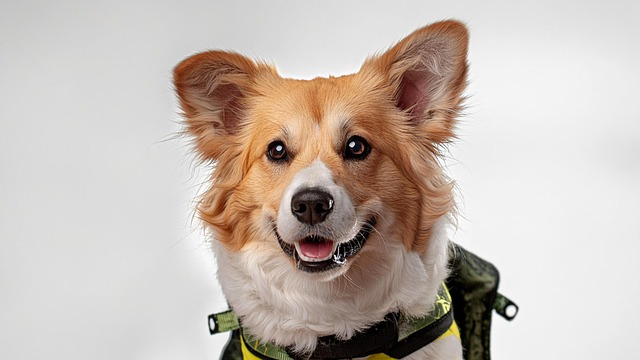
What do groomers use for shedding
When Sarah first brought home her golden retriever, she spent weekends vacuuming piles of fur from her couch—and found herself picking strands out of her coffee mug more often than she’d like.
Adopting a dog might seem straightforward at first glance—you walk into a shelter, fall in love with those pleading eyes, and walk out with your new best friend. But the reality of dog adoption requirements goes far deeper than that initial spark of connection. The decision to welcome a four-legged family member into your life represents one of the most significant commitments you'll ever make, one that extends well beyond the paperwork and adoption fees.
Most shelters and rescue organizations across the United States maintain specific criteria that potential adopters must meet. You'll typically need to be at least 18 years old, provide valid identification, and demonstrate stable housing arrangements. Many facilities require proof of income or employment, not to exclude anyone unfairly, but to ensure you can provide consistent care. Some landlords prohibit pets, so having written permission from your property owner becomes essential if you're renting.
What surprises many first-time adopters is the thorough application process. Expect detailed questions about your living situation, previous pet experience, and daily schedule. References from veterinarians or personal contacts are often required. This isn't bureaucratic busy work—these organizations have seen too many animals returned when families weren't truly prepared for the responsibility ahead.
The emotional responsibilities of dog adoption run deeper than most people anticipate when they're captivated by that adorable face at the shelter. Dogs aren't decorative additions to your home; they're sentient beings with complex emotional needs that mirror our own in surprising ways. Your new companion will experience anxiety during the transition period, possibly exhibiting behaviors like excessive barking, destructive chewing, or accidents in the house. This adjustment phase can last weeks or even months.
I've witnessed countless families struggle with the reality that their rescue dog doesn't immediately transform into the perfect, grateful pet they envisioned. Some dogs come with behavioral challenges stemming from previous trauma or inadequate socialization. Others simply need time to trust again. The commitment here isn't just about providing food and shelter—it's about offering consistent, patient guidance while your dog learns to feel secure in their new environment.
The time investment alone can be overwhelming. Puppies require multiple potty breaks throughout the day, while older dogs might need extensive retraining. Training sessions, daily walks, grooming, and simple companionship demand hours of your time each week. Dogs are social creatures who suffer when left alone for extended periods. If your lifestyle involves 10-hour workdays with lengthy commutes, you'll need to honestly assess whether that's fair to your potential companion.
Beyond the adoption fee, which typically ranges from $50 to $500 depending on your location and the organization, the financial costs of adopting a dog create ongoing obligations that catch many families off guard. The American Pet Products Association estimates that dog owners spend between $1,000 to $2,000 annually on their pets, but this figure can vary dramatically based on your dog's size, health needs, and lifestyle choices.
Veterinary care represents the largest expense category. Initial wellness exams, vaccinations, spaying or neutering, and microchipping can easily cost $500 to $1,000 in the first year alone. Monthly heartworm and flea prevention adds another $200 to $400 annually. Quality dog food for a medium-sized dog costs roughly $400 to $800 per year, though premium brands or dogs with special dietary needs push this figure higher.
Emergency veterinary visits create the most financial stress for unprepared owners. A simple stomach upset might cost $300 for examination and medication, while more serious conditions like bloat, broken bones, or ingestion of foreign objects can result in bills ranging from $2,000 to $10,000. Pet insurance helps mitigate these costs, but monthly premiums add another ongoing expense to consider.
Training classes, grooming services, boarding fees for vacations, toys, leashes, collars, beds, and replacement items for things your dog decides to chew all contribute to the total cost of ownership. The initial excitement of buying cute accessories quickly gives way to the practical reality of replacing destroyed items and maintaining your dog's health and happiness.
Transforming your living space into a dog-friendly environment requires both practical modifications and lifestyle adjustments that extend far beyond what to prepare before adopting a dog in terms of supplies. Your home needs to become a safe haven where your new companion can thrive while coexisting peacefully with your family's routines.
Start by dog-proofing at ground level—literally get down on your hands and knees to see the world from your future pet's perspective. Electrical cords, small objects that could become choking hazards, toxic plants, cleaning supplies, and medications all need to be moved out of reach. Baby gates help restrict access to certain areas while your dog learns household rules.
Consider your flooring situation realistically. Accidents will happen during the adjustment period, and some dogs never fully master house training. Hardwood floors and tile clean easily, while carpeting can retain odors that encourage repeat offenses. If you have expensive rugs or furniture, accept that they might sustain damage during the training process.
Your daily routine will shift dramatically. Dogs need consistent meal times, potty breaks, exercise, and attention. If you're accustomed to spontaneous after-work plans or weekend getaways, those freedoms become complicated when you're responsible for another living being. Arrangements for pet care during your absence add both complexity and expense to previously simple decisions.
Sleep patterns often change too. Young dogs might need middle-of-the-night bathroom breaks, while anxious rescue dogs may pace, whine, or bark during their adjustment period. Your patience will be tested, but consistency in your response helps establish the security your dog needs to settle into your household successfully.
The most successful dog adoptions happen when families approach the decision with clear-eyed understanding of both the joys and challenges ahead. This isn't about discouraging adoption—millions of dogs need loving homes, and the bond between humans and dogs enriches our lives immeasurably. Rather, it's about ensuring that when you make this commitment, you're prepared to honor it for the 10 to 15 years your dog will be part of your family.
Before visiting shelters or browsing adoption websites, create an honest dog adoption checklist USA families can use to evaluate their readiness. Assess your financial stability, available time, living situation, and family dynamics. Research local veterinarians, training resources, and pet-friendly services in your area. Consider fostering first if you're uncertain about the long-term commitment—many dogs benefit from temporary homes while permanent families are found.
Remember that the perfect dog for your family might not be the one that initially captures your heart. Shelter staff and volunteers possess invaluable insights about each animal's personality, energy level, and special needs. Trust their guidance when they suggest matches based on your lifestyle rather than appearance alone. The most rewarding adoptions happen when there's genuine compatibility between dog and family.
Ultimately, successful dog adoption requires honest self-reflection about your motivations, capabilities, and commitment level. The dogs waiting in shelters across America deserve families who understand the depth of responsibility they're accepting. When you're truly prepared for the emotional, financial, and lifestyle changes involved, you'll discover that few experiences in life compare to the unconditional love and loyalty of a grateful rescue dog who finally has their forever home.

When Sarah first brought home her golden retriever, she spent weekends vacuuming piles of fur from her couch—and found herself picking strands out of her coffee mug more often than she’d like.

Unlock the secrets to safe, soothing puppy teething with vet-approved chews—protect your pup and your home during this challenging stage.

Let’s start with the honest truth: grabbing kitchen scissors to trim your dog’s overgrown fringe might seem like a quick fix, but it’s a high-stakes haircut.

You’ve just settled on the couch for a movie night when your dog’s nails start clicking across the hardwood like tiny tap dancers. Or maybe you notice them slipping on the kitchen tiles more often.

Let's be honest, that moment when you pull out the brush and your dog suddenly remembers a very important appointment behind the sofa is pretty universal.

Picture this: it’s bath time for your pup, and you’re fresh out of dog shampoo. As you reach for your own coconut-scented shower gel, you pause – could this work? Let’s be honest,